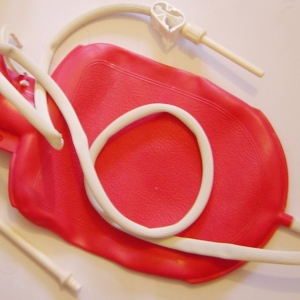Douching is a therapeutic procedure in which the vagina is washed with a solution of drugs. Sometimes decoctions of healing herbs or soda solution are used.
Do I need to do douching?
There is no consensus for the effectiveness of this procedure. In world therapeutic practice, this method is tried to replace with a less aggressive effect. The following fears are the arguments in favor of the exclusion of douching:
- Leaching of normal microflora of the vagina leads to a decrease in resistance to pathogens, the risk of developing infectious diseases and inflammatory processes in the organs of the genitourinary system.
- The action of the solution can disrupt the epithelium of the cervix, which is especially dangerous for erosion or pregnancy.
- In case of diagnosis of the disease, homemade douching can lubricate the entire clinical picture and make it impossible to correctly determine the diagnosis and treatment.
Douching cannot be prescribed yourself for the purposes of “hygiene”, this method can be used only after prescribing a doctor.
How to do douching - rules
- Water for the preparation of the solution should be boiled and match body temperature (37-38C).
- The general course of treatment is Z-5 days. Long -term leaching leads to injury to the epithelial layer of the vagina and slowing down the restoration of natural microflora.
- The duration of the procedure should not exceed 10-15 minutes.
- The frequency of douching should be recommended by a doctor. In the general case, the following scheme is assigned: in the first 2 days the procedure is carried out twice a day, in the following - 1 time in the evening.
- The liquid must be administered under minimal pressure in order to exclude its ingress into the uterine cavity. To control the pressure, it is better to use an irrigator (Esmarch's circle) than a sprint.
- When entering the tip, you need to be as careful as possible and not make great efforts, the procedure should not be painful. With a sharp input, there is a risk of injury to the walls of the vagina and the entrance to the urinary canal.
- Douching can be carried out at home, lying in the bathroom and laid legs on its sides. Another option is the situation sitting on a chain. In this case, the container filled with a solution must be lifted by 30-40 cm. The liquid will be poured, cleansing the walls of the vagina, and flow out under the influence of its own gravity. This excludes the possibility of its ingress in the uterine cavity.
- When using chemical components in the composition for douching, it is important to accurately observe the recommended proportions of dilution. For the procedure, baking soda, potassium permanganate, boric acid, hydrogen peroxide are used. An increase in the concentration of a substance in the solution will lead to absolute sterility of the vagina. This will make it vulnerable to infectious inflammation or lead to a burn of mucous membranes.
- If douching is done by a diluted decoction of herbs - chamomile, celandine, St. John's wort, calendula, nettles, string, boro uterus, the procedure should be carried out immediately after the preparation and cooling of the decoction.
- All tools and tips after use must be washed, and before the next use they must be sterilized (processed with steam or boil).
Contraindications to douching
It is forbidden to perform douching in the following situations:
- Without obvious therapeutic necessity and prescribing the attending physician. This procedure is not hygienic, reduces protective functions and disrupts the vaginal microflora, which creates the conditions for the growth and activity of pathogenic bacteria.
- In the case of the appearance of mucous membranes, smearing or bloody discharge, itching, pain, without examination by a gynecologist.
- During the period of exacerbation of chronic diseases of the organs of the genitourinary system or acute cystitis, urethritis, erosion of the neck, inflammation of the uterine appendages.
- During menstrual discharge (the solution can freely penetrate the uterine cavity through the open cervical canal).
- During pregnancy - douching can provoke leaching of the mucous plug that closes the entrance to the uterine canal, intrauterine infection of the fetus, and the threat of termination of pregnancy.
- In the postpartum recovery period, until the postpartum discharge ends-about 6-8 weeks.
- After diagnostic curettage, surgery, miscarriage or abortion - at least 4 weeks.

































